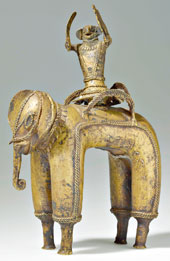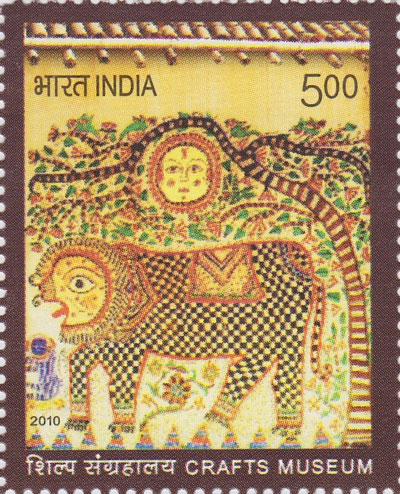
“The tribals I was told about are elephant people. As far back as any one can remember, they have taken care of elephants. They understand elephants as no one else does. They grow up with elephants, and the elephants with them.” – Edward Rice in Mother India’s Children >>
Some tribal communities inhabit regions where wild animals abound. Where conservation measures have helped to restore elephant and tiger populations, as in the Western Ghats, this has met with international acclaim. Yet shrinking habitats have also led to an unprecedented increase in the number of man-animal encounters, not seldom with lethal consequences:
Adivasi elders tell us that they walked among the elephants without fear 50 years ago. Those days are long gone. Read more >>

For a perspective on these issues, see Tiger conservation and tourism – its impact on the people in and around the tiger reserves >>
“What we are telling to the outer world is that no conservation would be possible without cooperation of the local community [and] integrating their traditional wisdom with modern-day scientific approach.” – WWF’s Kerala consultant KH Amitha Bachan | Learn more: Biodiversity | Climate change | Ethnobotany & ethnomedicine | Nature and wildlife | Sacred grove | United Nations on climate change >> >>
Up-to-date reports by Indian experts and journalists
Search tips
Combine the name of any particular state, language or region with that of any tribal (Adivasi) community.
Add keywords of special interest (health, nutrition endangered language, illegal mining, sacred grove); learn about the rights of Scheduled Tribes such as the “Forest Rights Act” (FRA); and the United Nations “Declaration on the Rights of Indigenous Peoples”, “Universal Declaration of Human Rights”, “women’s rights”, or “children’s right to education”.
Specify any other issue or news item you want to learn more about (biodiversity, bonded labour and human trafficking, climate change, ecology, economic development, ethnobotany, ethnomedicine, global warming, Himalayan tribe, hunter-gatherers in a particular region or state, prevention of rural poverty, water access).
For official figures include “scheduled tribe ST” along with a union state or region: e.g. “Chhattisgarh ST community”, “Scheduled tribe Tamil Nadu census”, “ST Kerala census”, “Particularly Vulnerable Tribal Group Jharkhand”, “PVTG Rajasthan”, “Adivasi ST Kerala”, “Adibasi ST West Bengal” etc.
In case the Google Custom Search window is not displayed here try the following: (1) toggle between “Reader” and regular viewing; (2) in your browser’s Security settings select “Enable JavaScript” | More tips >>
List of websites covered by this Google custom search engine
Academia.edu (platform for academics to share research papers) – www.academia.edu
Archive.org – https://archive.org
Centre for Science and Environment – https://www.cseindia.org
Current Conservation – https://www.currentconservation.org
Development and Cooperation (D+C) https://www.dandc.eu
Down To Earth (India) – www.downtoearth.org.in
India Environment Portal – www.indiaenvironmentportal.org.in
Harnessing Nature Magazine – https://harnessingnature.online
Mongabay-India – https://india.mongabay.com
M S Swaminathan Research Foundation – www.mssrf.org
Navdanya (protecting India’s biodiversity based food heritage) – https://navdanya.org
Third World Network (Penang, Malaysia) – https://twn.my
The Shola Trust (nature conservation in the Nilgiri region) – www.thesholatrust.org
Research the above issues with the help of Shodhganga: A reservoir of theses from universities all over India, made available under Open Access >>
Note: hyperlinks and quotes are meant for fact-checking and information purposes only | Disclaimer >>